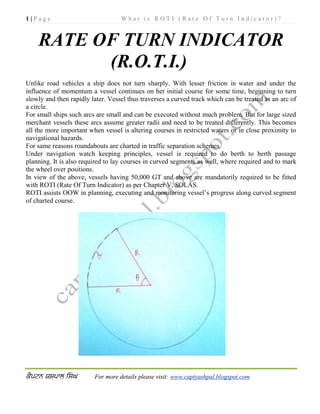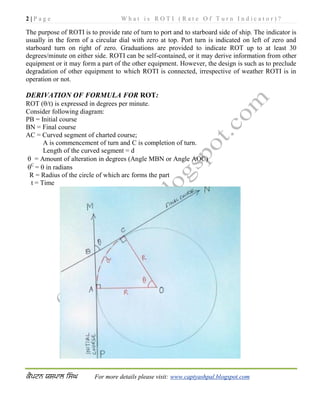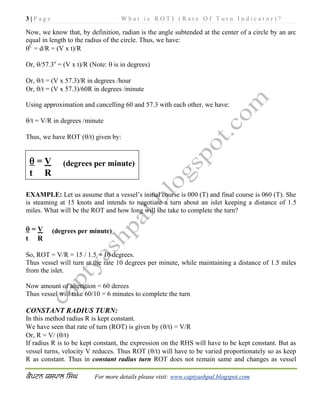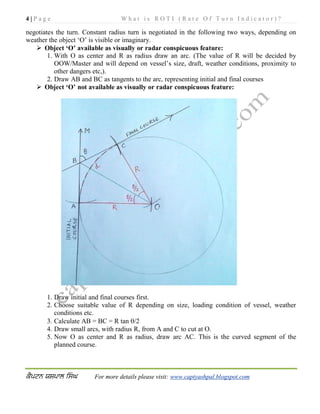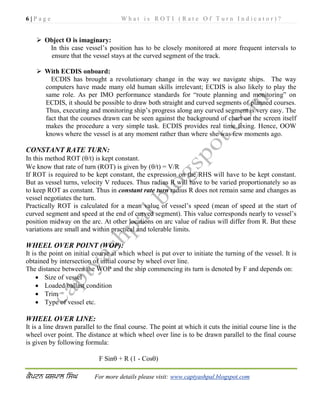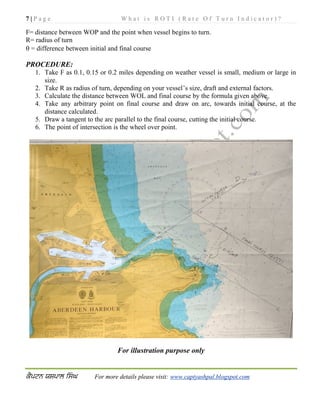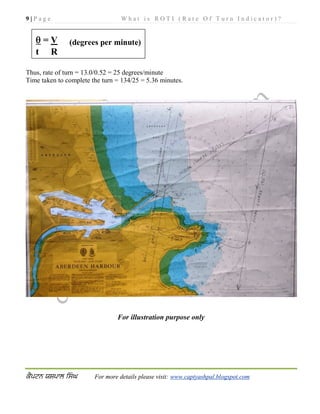This document discusses Rate of Turn Indicator (ROTI), which is required on vessels over 50,000 GT per SOLAS regulations. ROTI assists the officer on watch in planning, executing, and monitoring a vessel's progress along a curved segment of its charted course. It provides the rate of turn to port and starboard in degrees per minute. The document derives the formula for ROT as the change in angle over time divided by the radius of the turn. It provides examples of using ROTI for constant radius and constant rate turns, and discusses wheel over points and planning turns.
